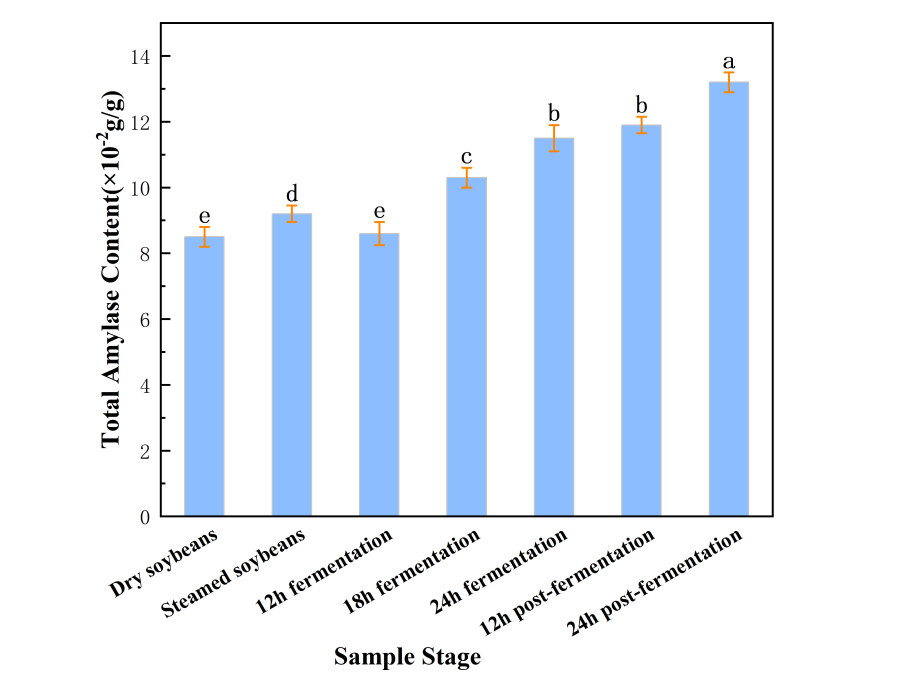Abstract
To investigate the changes of bioactive compounds during natto fermentation, this study focused on the variations in the levels of phenolic compounds, isoflavones, and antioxidant capabilities at various stages of the natto fermentation. Additionally, the impact of simulated in vitro digestion process of natto on phenolic compounds, isoflavones, and antioxidant capabilities was evaluated. The results indicated that fermentation process increased the phenolic content of 60.56%, while the isoflavone content decreased in 63.30%. Following in vitro digestion, the total phenolics content exhibited a release rate of 70.64%, while the isoflavones content had a residual rate of 21.79%. Antioxidant activity was assessed through DPPH, ABTS, and ORAC assays. After in vitro digestion at different fermentation stages, the ability of scavenging DPPH radicals decreased, whereas the ABTS and ORAC scavenging capabilities exhibited an upward trend. Specifically, during in vitro gastric digestion, the ABTS and ORAC radical scavenging abilities of after-ripening soybeans (24h) were 1.80 and 2.22 folder than those of dried soybeans respectively. Similarly, during in vitro intestinal digestion phase, these scavenging abilities were 1.70 and 1.14 folder than those of dried soybeans respectively.
Funding
This work was supported in part by the National Natural Science Foundation of China, under grant No. 62173007.
Cite This Article
APA Style
Xu, C., Sun, S., & Han, A. (2024). Effects of Fermentation Process and in Vitro Digestion on the Content of Total Phenols and Isoflavones and Antioxidant Properties in Natto. Agricultural Science and Food Processing, 1(1), 38–47. https://doi.org/10.62762/ASFP.2024.541137
Publisher's Note
IECE stays neutral with regard to jurisdictional claims in published maps and institutional affiliations.
Rights and permissions
Institute of Emerging and Computer Engineers (IECE) or its licensor (e.g. a society or other partner) holds exclusive rights to this article under a publishing agreement with the author(s) or other rightsholder(s); author self-archiving of the accepted manuscript version of this article is solely governed by the terms of such publishing agreement and applicable law.


 Submit Manuscript
Edit a Special Issue
Submit Manuscript
Edit a Special Issue

